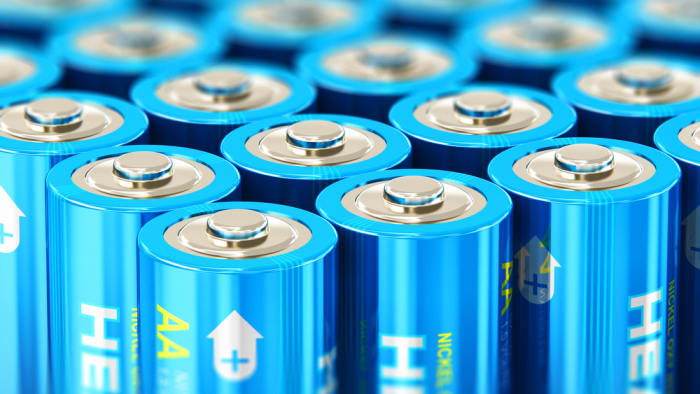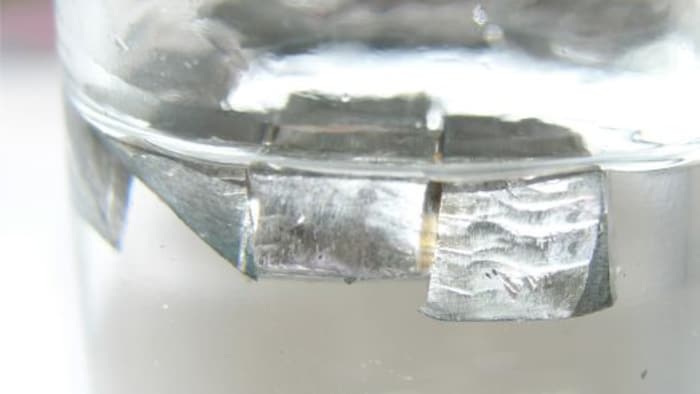Chemical and physical characteristics of lithium, and its reaction with oxygen
Properties of the lightest metal

Lithium (Li) is a chemical element with the atomic number of 3 and an atomic mass of 6.941. Lithium is encountered in nature in the form of the two stable nuclides 6Li (7.6% by mass) and 7Li (92.4%). In the periodic table, lithium is located in the second period, in the first group, and the element is classified as an alkaline metal. In compounds, lithium displays an oxidation state of +1. In the form of a simple element, lithium, is a malleable, soft, light metal of a silvery color.

Chemical and physical characteristics of lithium
Lithium is the lightest of all metals, with a density of 0.534 g/cm3. It melts at a temperature of 180.5 degrees Celsius and boils at a temperature of 1,330 degrees Celsius.
Lithium has a high activity, and the metal enters into a reaction with oxygen and nitrogen in the air under ordinary conditions. For this reason, in air lithium swiftly oxidizes with the formation of a dark coating of interaction products, and the equations of the reactions are:
4Li + O₂ = 2Li₂O,
6Li + N₂ = 2Li₃N.

Discovery of lithium and location of the element in nature
Lithium was discovered by the Swedish scientist Arfwedson in 1817 – the chemist first found the element in the mineral petalite, and then in spodumene and lepidolite. The metal received its name as it was found in “stones” (the Greek word for stone is Litos). In 1818, the German chemist C. G. Gmelin first observed a red flame that is characteristic for lithium salts. In 1821, the English chemist William Thomas Brande isolated the metal by electrolysis. Lithium was first obtained in larger quantities in 1855, by the electrolysis of molten chloride. The equation of the reaction:
2LiCl = 2Li + Cl₂.
Lithium is widespread in the earth’s crust, accounting for around 3% of its mass. The main minerals containing lithium are petalite, spodumene, lepidolite and amblygonite.

Lithium is contained in several rock-forming minerals and is present in mineralized waters and the brine of certain lakes.
Click here to learn more about properties of lithium and other metals.
Lithium – reaction with oxygen, application of the metal
Alkaline metals and their compounds are widely used in technology. Lithium is used in nuclear energy. The isotope 6Li serves as an industrial source for the production of tritium, and the isotope 7Li is used as a heat conductor. LiF is used in the smelting of aluminum. Lithium and its compounds are also used as an additive to rocket fuel.

Lubricants containing lithium compounds preserve their properties at high temperatures. Lithium hydroxide is present in the electrolyte of alkaline batteries, increasing their service period by two to three times. Lithium is also used in ceramic, glass and other branches of the chemical industry. Generally, by its importance in modern technology this metal is one of the most important elements. The reaction of lithium with oxygen leads to the formation of lithium oxide Li₂O – a colorless crystalline substance with a melting temperature of 1,438 degrees Celsius, and a boiling temperature of around 2,600 degrees Celsius. Lithium oxide is obtained through the direct oxidation of metallic lithium at a temperature over 200 degrees Celsius, and also the breakdown of lithium hydroxide LiOH, lithium nitrate LiNO₃ and lithium carbonate LiNO₃.
Lithium oxide Li₂O easily interacts with water with the formation of lithium hydroxide, LiOH. This reaction is accompanied by intense heating; LiOH absorbs CO₂ from the air, forming lithium carbonate, Li₂CO₃.